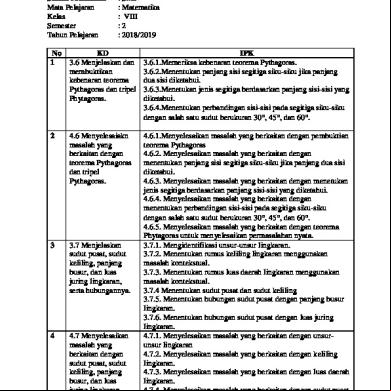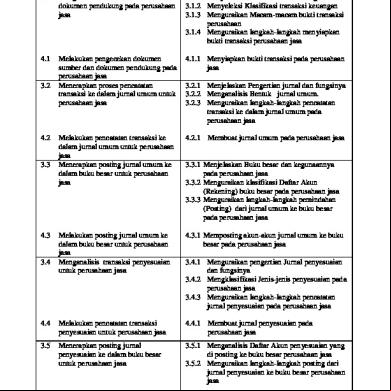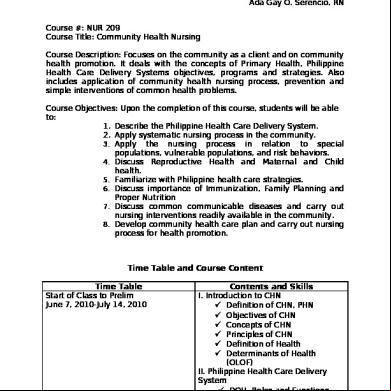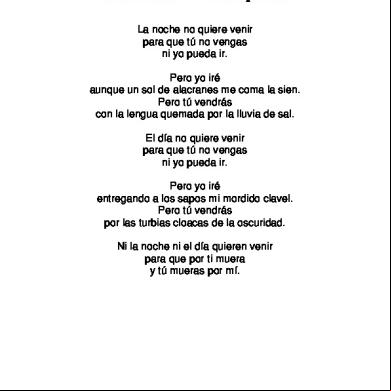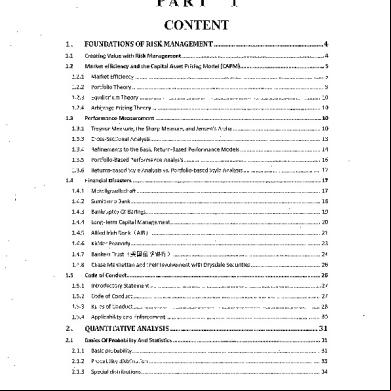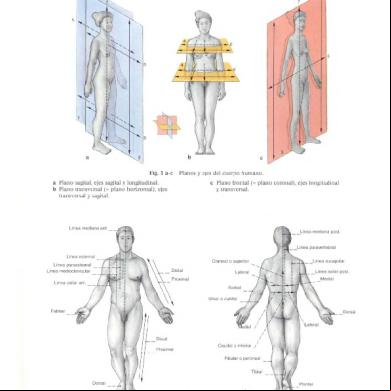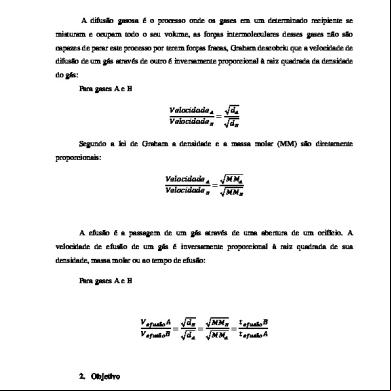Ipk Kart Setup 6o1cq
This document was ed by and they confirmed that they have the permission to share it. If you are author or own the copyright of this book, please report to us by using this report form. Report 3i3n4
Overview 26281t
& View Ipk Kart Setup as PDF for free.
More details 6y5l6z
- Words: 3,472
- Pages: 21
Le misure riportante all'interno di questo manuale di setup, sono da ritenersi un punto di partenza dalla quale sviluppare un setting personalizzato, ideale al tipo di circuito, condizioni ambientali e pneumatici utilizzati. The measures showing in this manual, should be considered a starting point from which to develop a custom setup for the track, ambiental conditions and tyres used.
MANUTENZIONE DEL TELAIO | CHASSIS MAINTENANCE IT
EN
Assicurarsi che la scocca e i componenti meccanici non siano sottoposti ad un eccessivo stress o sforzo che comprometta la performance del telaio. IPK raccomanda di tenere puliti e liberi da eventuali detriti tutti i cuscinetti. Assicurarsi che i fuselli mantengano l'angolo originale di inclinazione in quanto qualsiasi danno ad essi causato potrebbe creare un funzionamento non corretto del telaio. IPK raccomanda un uso regolare degli strumenti di allineamento. Make sure that the frame and mechanical components are not exposed to excessive stress or strain which adversely could affect the chassis' performance. Make sure to keep all the bearings clean and free of any debris. Assure that the spindles maintain their original inclination degree as any damage caused to them could affect the chassis performance. IPK recommends the regular use of alignment tools.
MANUTENZIONE IMPIANTO FRENO | BRAKE SYSTEM MAINTENANCE IPK raccomanda l'utilizzo di olio freni DOT 4.
IT
Sostituire tutti gli o-ring e le guarnizioni indicativamente dopo 20-25 ore d'utilizzo; sostituire l'olio dell'impianto freno dopo 15 ore d'uso. Verificare che i pistoni della pinza freno siano sempre perfettamente levigati e privi di irregolarità superficiali.
EN
IPK recommends to use DOT 4 brake oil. Replace all o-rings and seals after approximately 20-25 hours of use, and replace the brake system oil after approximately 15 hours of use. Check that the brake caliper pistons are always kept perfectly smooth and free of surface irregularities.
IPK Technical Department
CARREGGIATE | TRACKS WIDTH IT
EN
La carreggiata è la distanza tra i rispettivi centri delle due ruote dello stesso asse. Per comodità di misurazione, rileveremo tale misura tra i punti estremi dei cerchi. The track width is the distance between the centers of the two wheels of the same axle. To make the measurement easier , we shall remark the track width between the extreme points of the rims. ASCIUTTO | DRY
BAGNATO | WET
carreggiata anteriore | front track width
1215 - 1225 mm 1255 - 1265 mm
carreggiata posteriore | rear track width
1395 mm
1360 - 1370 mm
ASCIUTTO | DRY
BAGNATO | WET
MOZZI | HUBS
mozzo anteriore | front hub mozzo posteriore | rear hub
IPK Technical Department
FMB / STR
75 mm
RBS
95 mm 95 mm
110 mm
SUGGERIMENTI E CONSIGLI | TIPS & ADVICE IT
ALLARGO LA CARREGGIATA ANTERIORE
STRINGO LA CARREGGIATA ANTERIORE
ALLARGO LA CARREGGIATA POSTERIORE
STRINGO LA CARREGGIATA POSTERIORE
IPK Technical Department
Allargo la carreggiata anteriore quando voglio avere un kart agile nei circuiti tortuosi e nei tornanti; il kart perde di reattività e viene ridotto l'effetto sovrasterzante durante la percorrenza di curva; Se si aumenta l'incidenza a terra della ruota anteriore interna permette di sollevare di più il telaio e di avere un migliore inserimento in curva. Ottengo una maggiore tenuta sull'asse anteriore, ma un'eccessiva aderenza può portare il kart ad impuntarsi e provocare un sovrasterzo in uscita di curva. Il kart tenderà ad uscire dalle curve con più agilità, "scivolando" meglio in uscita, assecondando l'accelerazione del kart. Stringo la carreggiata anteriore per ridurre l'incidenza a terra della ruota anteriore interna, favorendo la percorrenza nelle curve ad ampio raggio. L'eccessiva riduzione della carreggiata anteriore può portare ad avere un kart sottosterzante. Allargo la carreggiata posteriore per ottenere una migliore stabilità in frenata; ma, per poter sterzare, dovrò avere trasferimenti di carico maggiori per poter alzare la ruota posteriore interna. In caso contrario quest'ultima striscierà a terra portando il kart in sottosterzo. Allargando la carreggiata posteriore porterà inoltre ad avere un assale "meno legato", aumentando la coppia flettente agente su di esso. Questo comporterà a non avere abbastanza aderenza in accelerazione facendo "scivolare" il posteriore e provocando il sovrasterzo. In uscita di curva avrò invece un grip in accelerazione maggiore, in quanto l'assale è "più legato" e tenderà a flettersi meno. Stringendo la carreggiata al posteriore, con un trasferimento di carico elevato, si farà alzare troppo presto la ruota posteriore interna, provocando così un inserimento in curva troppo veloce e favorendo il sovrasterzo. Inoltre stringendo la carreggiata posteriore facilito l'entrata in curva del kart, in quanto tenderà a girare di più con meno angolo volante.
EN
WIDENING THE FRONT TRACK
Widen the front track if you want to have an agile kart in the winding tracks; the chassis loses reactivity and is reducing oversteer during mid-corner; If you increase the ground incidence of the inside front wheel, the chassis will lift up more and you will have a better turn-in; I get a better grip on the front, but an excessive adherence can produce an oversteer of the kart out of corners.
REDUCING THE FRONT TRACK
WIDENING THE REAR TRACK
The kart will go out of the corners with more agility, sliding and ing the acceleration of the kart out of the corner; Decrease the front track to reduce the incidence of the inside front wheel on the ground, facilitating the through the large-radius turns; The excessive reduction of the front track can produce the kart understeer. Widening the rear track to get a better stability during the braking, but, in order to steer, I will have to have more load transfers to be able to lift up the inside rear wheel; Otherwise the wheel drags to the ground bringing the kart understeer; Widening the rear track will have an axle less stiff, increasing the bending torque acting on it. This will not have enough grip when accelerating and causing oversteer.
REDUCING THE REAR TRACK
IPK Technical Department
Out of the corners will have a better acceleration grip, because the axle is stiffer and tend to bend less; Reducing the rear track width, with a high load transfer, the kart will lift up the inner rear wheel too early, this causing a too fast entering in turns and favoring the oversteer; Decreasing the rear track, the entry in the turns of the kart is more easy, it will tend to turn more with less steering wheel angle.
ALTEZZA DA TERRA | RIDE HEIGHT ALTEZZA DA TERRA ANTERIORE | FRONT RIDE HEIGHT ASCIUTTO | DRY
STANDARD
MAX GRIP
BAGNATO | WET
MIN GRIP
ALTEZZA FUSELLO STANDARD (2-2) ALTEZZA FUSELLO (1-3) STANDARD SPINDLE HEIGHT (2-2) SPINDLE HEIGHT (1-3)
MAX GRIP
ALTEZZA FUSELLO (3-1) SPINDLE HEIGHT (3-1)
ALTEZZA DA TERRA POSTERIORE | REAR RIDE HEIGHT
1
altezza da terra posteriore minima (-5mm) minimum rear ride height (-5mm)
2
altezza da terra posteriore standard standard rear ride height
3
altezza da terra posteriore massima (+5mm) maximum rear ride height (+5mm)
SUGGERIMENTI E CONSIGLI | TIPS & ADVICE IT
EN
Aumentare l'altezza da terra anteriore se il kart sottosterza in ingresso e/o uscita di curva. Aumentare l'altezza del posteriore se il kart sovrasterza in ingresso e/o uscita di curva. Un eccessivo aumento dell'altezza da terra anteriore può provocare il sovrasterzo. Increase the front ride height if the kart understeers into and/or out of the corners. Increase the rear ride height if the kart oversteers in or out of the corners. An excessive increase of the front ride height may cause oversteer.
IPK Technical Department
STERZO | STEERING CONVERGENZA | TOE
IT
EN
La convergenza è l'angolo creato tra l'asse longitudinale del kart e l'asse delle ruote anteriori. Quest'angolo è responsabile della performance del kart in condizioni di marcia rettilinea, in curva e delle modalità di usura dei pneumatici. L'angolo di convergenza è misurato grazie alla seguente formula: The toe is the angle created between the longitudinal axis of the kart and the front wheels axis. This angle is "responsible" of kart's performances driving on straight and curved, and of the tires wear. The toe angle is measured thanks to the following formula:
A = arctg((tH-tL)/2)/D) [°] D = Diametro ruota tH = distanza anteriore tra le ruote tL = distanza posteriore tra le ruote
IPK Technical Department
D = wheel diameter tH = front distance between the wheels tL = rear distance between the wheels
IT
EN
Gli attriti di rotolamento degli pneumatici generano forze parallele alla direzione di avanzamento del kart ma con verso opposto. Queste forze generano una coppia sulle ruote che agisce sull'asse del fusello, che faranno "aprire" l'angolo di convergenza. Per questo motivo, per ottenere un angolo di convergenza nullo in fase dinamica del kart, si dovrà impostare un valore negativo in fase statica. The rolling resistance of tires generate parallel forces to the direction of advancement of the kart, but with opposite direction. These forces generate a torque at the wheels, acting on the axis of the spindle, which will "open" the angle of convergence. For this reason, in order to obtain a 0° toe angle in the dynamic action of the kart, you will have to set a negative value in the static phase.
ASCIUTTO | DRY
BAGNATO | WET
+4 mm
+8 mm
TIRANTE STERZO | STEERING RODS
1
2
sterzo meno diretto e minor forza impiegata per curvare steering less direct and less force used to bend. posizione standard di fissaggio del tirante sterzo. standard tie rod fixing position.
3
IPK Technical Department
sterzo più diretto e maggior forza impiegata per curvare. more direct steering and greater force used to bend.
SUGGERIMENTI E CONSIGLI | TIPS & ADVICE IT
Su circuiti "veloci" ad alta aderenza, la convergenza deve tendere ad angoli negativi. Si ottiene un maggior trasferimento di carico sul pneumatico esterno, aumentando la sterzata a parità di angolo volante. Su circuiti "tecnici" a bassa aderenza, la convergenza deve essere regolata su angoli positivi in quanto si deve prediligere l'inserimento in curva del kart. Ciò consente che la ruota anteriore interna sia maggiormente coinvolta nell'aderenza e nella direzionalità del kart. Inoltre, un angolo di convergenza positivo permette di avere un angolo di deriva in rettilineo che permette di mantenere in temperatura i pneumatici facilitando quindi un ottimo grip nelle curve successive al rettilineo. Su circuiti bagnati, essendo il grip molto basso, si cerca di mantenere gli pneumatici in temperatura aprendo il più possibile la convergenza. La differenza tra tH e tL può arrivare anche a 8 mm.
EN
On high-grip and "fast" tracks, the toe angle must be negative. You'll get a greater load-transfer on On low-grip and "technical" tracks, the toe angle must be set to positive. This means that the inside front wheel is more involved in adherence and in directionality of the kart. In addition, a positive angle of toe allows for an angle of drift in a straight line that allows you to maintain the temperature of the tires and then a very good grip in the turns after the straight; On wet tracks, the grip is very low. The temperature of the tires must be maintained high with high toe angle. The difference between TH and TL can be up to 8 mm.
IPK Technical Department
ECCENTRICI: CAMBER & CASTER | ECCENTRICS: CAMBER & CASTER CAMBER
IT
L'angolo di camber determina l'inclinazione del pneumatico, la sua impronta a terra e la sua usura. L'angolo di camber è positivo se la distanza fra la parte superiore dei pneumatici è maggiore di quella inferiore. Regolando un valore nullo, le ruote in rettilineo toccano l'asfalto con tutta la larghezza del battistrada mentre, con valori diversi da 0°, positivi o negativi, tocca solo una (esterna od interna) con riduzione dell'attrito di rotolamento. I valori dell'angolo di camber riportati nelle tabelle che seguono, sono stati rilevati senza alcuna forza gravitazionale applicata sul telaio. Per ottenere un valore reale, determinato principalmente dal peso del pilota applicare la seguente formula: Valore reale = Valore teorico + ΔX
EN
The camber angle determines the inclination of the tire, its on the ground and wear . The camber angle is positive if the distance between the top of the tires is greater than the lower one. Adjusting a null value, the wheels in a straight line touch the ground with the entire width of the tread , while, with values different from 0 °, positive or negative, touches only one (external or internal) with reduced friction rolling. The camber angle values reported in the tables below, have been detected without any gravitational force applied on the frame. To obtain a real value, mainly determined by the weight of the driver , it's needed to apply the following formula: Real value = theorical value + ΔX
PESO PILOTA | DRIVER WEIGHT
50
55
60
65
70
75
80
85
90
95
CAMBER (ΔX) [°]
-1
-1,1
-1,2
-1,3
-1,4
-1,5
-1,6
-1,7
-1,8
-1,9
IPK Technical Department
CASTER
IT
EN
L'angolo di caster permette la regolazione dell'inclinazione e dell'altezza da terra delle ruote anteriori. Questo angolo consiste in una inclinazione dell'asse di rotazione dei fuselli, che determina, durante la rotazione dello sterzo, una variazione delle altezze delle ruote anteriori. La ruota anteriore esterna si solleverà, mentre quella interna si abbasserà. Maggiore sarà l'angolo di caster, maggiore sarà la differenza di altezza tra le ruote anteriori e quindi anche il trasferimento di carico fra ruote posteriori e anteriori. With the caster angle you can adjust the inclination and the height from ground of the front wheels. This angle consists of an inclination of the axis of rotation of the spindles, which determines, during the rotation of the steering, a variation of the height of the front wheels. The outer front wheel will go up, while the inner will go down. if the caster angle is greater, the difference in height between the front wheels will be greater too ( and also the load transfer between front and rear wheels ).
IPK Technical Department
ECCENITRICI | ECCENTRICS BOCCOLA SUPERIORE | UPPER BUSH A ECCENTRICO SUPERIORE 1 MM | 1MM UPPER ECCENTRIC B ECCENTRICO SUPERIORE 2 MM| 2MM UPPER ECCENTRIC C
BOCCOLA INFERIORE | LOWER BUSH D ECCENTRICO INFERIORE 1 MM| 1MM LOWER ECCENTRIC E ECCENTRICO INFERIORE 2 MM| 2MM LOWER ECCENTRIC F
IT
EN
IPK Technical Department
L'identificazione dei fori degli eccentrici parte da quello contrassegnato con la freccia (1) e sale di numerazione in senso antiorario. The holes identification of the eccentric start from the one marked with the arrow (1) and increases of numbering counterclockwise.
ASCIUTTO | DRY
STANDARD
/
/
MAX GRIP
MIN GRIP
ECCENTRICI 1 MM | 1 MM ECCENTRICS
ECCENTRICI 1 MM | 1 MM ECCENTRICS
UP1-LOW5
UP1-LOW5
UP5-LOW1
UP5-LOW1
camber caster o | wheelbase
+0,3° +1,6° -0,4mm
camber caster o | wheelbase
-0,4° -1,6° -0,2mm
ALTEZZA FUSELLO STANDARD (2-2) STANDARD SPINDLE HEIGHT (2-2)
ALTEZZA FUSELLO (1-3) SPINDLE HEIGHT (1-3)
BAGNATO | WET MAX GRIP ECCENTRICI 2 MM | 2 MM ECCENTRICS UP1-LOW5
UP1-LOW5
camber caster
0,6° 3,3°
ALTEZZA FUSELLO STANDARD (3-1) STANDARD SPINDLE HEIGHT (3-1)
IPK Technical Department
SUGGERIMENTI E CONSIGLI | TIPS & ADVICE IT
EN
Per ottenere un'usura uniforme degli pneumatici utilizzare un camber prossimo a 0°; Su circuiti a bassa aderenza utilizzare un angolo di camber a 0°, aumenterà l'inserimento ed il grip lungo tutta la percorrenza di curva; Su circuiti ad alta aderenza e circuiti tecnici, utilizzare un angolo di camber negativo. Le ruote anteriori accentueranno il sollevamento della ruota posteriore interna e si otterrà un inserimento rapido che andrà a stabilizzarsi nella seconda parte della curva, quando il battistrada sarà completamente a contatto con l'asfalto. Inoltre, con angolo di camber negativo, sarà possibile accelerare prima in uscita di curva; Sul bagnato utilizzare un angolo positivo. Il sollevamento della ruota posteriore interna sarà fluido e graduale; Aumentando l'angolo di caster, sarà maggiore il momento agente sugli pneumatici anteriori che determina un raddrizzamento delle ruote; questo implica uno sterzo più "duro"; Un valore basso dell'angolo di caster provoca un comportamento sottosterzante. Un valore eccessivo, al contrario, provoca un comportamento sovrasterzante; Aumentare l'angolo di caster per avere più inserimento e grip sull'anteriore lungo la percorrenza della curva; Ridurre l'angolo di caster per poter accelerare prima in uscita di curva; Su circuiti a bassa aderenza e sul bagnato regolare l'angolo di caster al massimo. To obtain a uniform consumption of the tires use a camber close to 0 °; On low-grip tracks use a camber angle of 0 °, the grip along the entire turn will increase; On high-grip tracks and technical tracks, use a negative camber angle. The front wheels accentuate the lifting of the inside rear wheel and you will get a quick insert that will stabilize in the second part of the curve, when the tires will be fully in with the ground. In addition, with negative camber angle, you can accelerate earlier out of turns; In the wet use a positive angle. The lifting of the inside rear wheel will be smooth and gradual; Increasing the caster angle, the torque acting on the front tires that determines a straightening of the wheels will be greater than ; this implies a steering more "hard"; A low value of the angle of caster causes understeer. An high value causes oversteering; Increase the caster angle for more grip on the front along the turn; Reduce the caster angle for an earlier acceleration outside the turn; On low-grip and wet tracks adjust the caster angle to the maximum.
IPK Technical Department
ASSALE | AXLE ASCIUTTO | DRY BAGNATO | WET assale / axle Ø50x1040mm
M
S
SUGGERIMENTI E CONSIGLI | TIPS & ADVICE IT
Su piste con elevato grip si tende montare un assale più morbido e ad allargare la carreggiata posteriore. Su piste con bassa aderenza si monta un assale più duro e si stringe la carreggiata posteriore. Se il kart "scivola" accelerando in uscita di curva, montare un assale più duro. Un assale troppo mordibo tende a flettersi di più e di conseguenza c'è meno area di contatto tra la gomma e l'asfalto, riducendo così la tenuta. Se non si ha a disposizione un'assale più duro, si può ovviare al problema stringendo leggermente la carreggiata posteriore o montando mozzi più lunghi che vanno ad irrigidire l'assale.
EN
On tracks with high grip it's adivisable to mount a softer axle and to widen the rear track On tracks with low grip mounts an harder axle and reduce the rear track width; If the kart "slides" out of corners, it's adivisable to mount an harder axle. A too soft axle will flex more and the area between the rubber and the asphalt is reduced. If an harder axle is not available, it's advisable to work around this problem reducing the rear track or mounting longer hubs which have the function to stiffening the axle.
IPK Technical Department
BARRE STABILIZZATRICI | STABILIZER RODS STANDARD SETTING FRONT TORSION BAR
NYLON
REAR TORSION BAR
NO
IPK Technical Department
SUGGERIMENTI E CONSIGLI | TIPS & ADVICE IT
EN
Se la pista è gommata ed il pneuamtico ha un buon grip sull'asfalto, rimuovere la barra stabilizzatrice anteriore per "liberare" il telaio ed aumentare ulteriormente l'aderenza. Se la pista è poco gommata è possibile recuperare sufficientemente il camber per avere una buona aderenza della gomma, montare la barra stabilizzatrice anteriore. In questo modo trasferisco il carico direttamente sulla gomma, scaricando il telaio. Su pista con elevato grip e kart che "attacca" troppo, togliere la barra posteriore. Su pista con poca aderenza e posteriore del kart che "scivola", montare la barra posteriore per irrigidire il retrotreno del telaio. If the track is rubberized and the tire has a good grip on the asphalt, remove the front stabilizer bar to make "less rigid" the frame and further increase the grip. If there isn't enough grip and it's not possible to recover enough camber angle to get a good grip of the tire, mount the front stabilizer bar. In this way you'll transfer the load directly on the tyre. On track with high grip and kart with too much adherence, remove the rear bar. On track with less grip and "sliding" rear of the kart, mount the rear bar to stiffen the rear of the frame.
IPK Technical Department
POSIZIONAMENTO SEDILE | SEAT POSITION A B C D
parte inferiore sedile - parte inferiore della scocca | bottom seat - bottom frame parte posteriore sedile - tangenza assale | back seat - axle parte posteriore sedile - asse del fusello | back seat - spindle axle parte frontale sedile - tangenza posteriore musetto | front seat - back front tube
MISURA SEDILE | SEAT MEASURE [mm]
CATEGORIA | CATEGORY
A
XS3 (KF) - DD2
B
C
D
200
1050
620
205
200
1040
595
200
195
190
1065
625
210
205
200
1065
625
1
2
3
210
205
210
0 XS3(KFJ) 3
XS1 (KZ) XS5 (ROTAX)
per piloti alti / for tall drivers
IPK Technical Department
IPK Technical Department
MANUTENZIONE DEL TELAIO | CHASSIS MAINTENANCE IT
EN
Assicurarsi che la scocca e i componenti meccanici non siano sottoposti ad un eccessivo stress o sforzo che comprometta la performance del telaio. IPK raccomanda di tenere puliti e liberi da eventuali detriti tutti i cuscinetti. Assicurarsi che i fuselli mantengano l'angolo originale di inclinazione in quanto qualsiasi danno ad essi causato potrebbe creare un funzionamento non corretto del telaio. IPK raccomanda un uso regolare degli strumenti di allineamento. Make sure that the frame and mechanical components are not exposed to excessive stress or strain which adversely could affect the chassis' performance. Make sure to keep all the bearings clean and free of any debris. Assure that the spindles maintain their original inclination degree as any damage caused to them could affect the chassis performance. IPK recommends the regular use of alignment tools.
MANUTENZIONE IMPIANTO FRENO | BRAKE SYSTEM MAINTENANCE IPK raccomanda l'utilizzo di olio freni DOT 4.
IT
Sostituire tutti gli o-ring e le guarnizioni indicativamente dopo 20-25 ore d'utilizzo; sostituire l'olio dell'impianto freno dopo 15 ore d'uso. Verificare che i pistoni della pinza freno siano sempre perfettamente levigati e privi di irregolarità superficiali.
EN
IPK recommends to use DOT 4 brake oil. Replace all o-rings and seals after approximately 20-25 hours of use, and replace the brake system oil after approximately 15 hours of use. Check that the brake caliper pistons are always kept perfectly smooth and free of surface irregularities.
IPK Technical Department
CARREGGIATE | TRACKS WIDTH IT
EN
La carreggiata è la distanza tra i rispettivi centri delle due ruote dello stesso asse. Per comodità di misurazione, rileveremo tale misura tra i punti estremi dei cerchi. The track width is the distance between the centers of the two wheels of the same axle. To make the measurement easier , we shall remark the track width between the extreme points of the rims. ASCIUTTO | DRY
BAGNATO | WET
carreggiata anteriore | front track width
1215 - 1225 mm 1255 - 1265 mm
carreggiata posteriore | rear track width
1395 mm
1360 - 1370 mm
ASCIUTTO | DRY
BAGNATO | WET
MOZZI | HUBS
mozzo anteriore | front hub mozzo posteriore | rear hub
IPK Technical Department
FMB / STR
75 mm
RBS
95 mm 95 mm
110 mm
SUGGERIMENTI E CONSIGLI | TIPS & ADVICE IT
ALLARGO LA CARREGGIATA ANTERIORE
STRINGO LA CARREGGIATA ANTERIORE
ALLARGO LA CARREGGIATA POSTERIORE
STRINGO LA CARREGGIATA POSTERIORE
IPK Technical Department
Allargo la carreggiata anteriore quando voglio avere un kart agile nei circuiti tortuosi e nei tornanti; il kart perde di reattività e viene ridotto l'effetto sovrasterzante durante la percorrenza di curva; Se si aumenta l'incidenza a terra della ruota anteriore interna permette di sollevare di più il telaio e di avere un migliore inserimento in curva. Ottengo una maggiore tenuta sull'asse anteriore, ma un'eccessiva aderenza può portare il kart ad impuntarsi e provocare un sovrasterzo in uscita di curva. Il kart tenderà ad uscire dalle curve con più agilità, "scivolando" meglio in uscita, assecondando l'accelerazione del kart. Stringo la carreggiata anteriore per ridurre l'incidenza a terra della ruota anteriore interna, favorendo la percorrenza nelle curve ad ampio raggio. L'eccessiva riduzione della carreggiata anteriore può portare ad avere un kart sottosterzante. Allargo la carreggiata posteriore per ottenere una migliore stabilità in frenata; ma, per poter sterzare, dovrò avere trasferimenti di carico maggiori per poter alzare la ruota posteriore interna. In caso contrario quest'ultima striscierà a terra portando il kart in sottosterzo. Allargando la carreggiata posteriore porterà inoltre ad avere un assale "meno legato", aumentando la coppia flettente agente su di esso. Questo comporterà a non avere abbastanza aderenza in accelerazione facendo "scivolare" il posteriore e provocando il sovrasterzo. In uscita di curva avrò invece un grip in accelerazione maggiore, in quanto l'assale è "più legato" e tenderà a flettersi meno. Stringendo la carreggiata al posteriore, con un trasferimento di carico elevato, si farà alzare troppo presto la ruota posteriore interna, provocando così un inserimento in curva troppo veloce e favorendo il sovrasterzo. Inoltre stringendo la carreggiata posteriore facilito l'entrata in curva del kart, in quanto tenderà a girare di più con meno angolo volante.
EN
WIDENING THE FRONT TRACK
Widen the front track if you want to have an agile kart in the winding tracks; the chassis loses reactivity and is reducing oversteer during mid-corner; If you increase the ground incidence of the inside front wheel, the chassis will lift up more and you will have a better turn-in; I get a better grip on the front, but an excessive adherence can produce an oversteer of the kart out of corners.
REDUCING THE FRONT TRACK
WIDENING THE REAR TRACK
The kart will go out of the corners with more agility, sliding and ing the acceleration of the kart out of the corner; Decrease the front track to reduce the incidence of the inside front wheel on the ground, facilitating the through the large-radius turns; The excessive reduction of the front track can produce the kart understeer. Widening the rear track to get a better stability during the braking, but, in order to steer, I will have to have more load transfers to be able to lift up the inside rear wheel; Otherwise the wheel drags to the ground bringing the kart understeer; Widening the rear track will have an axle less stiff, increasing the bending torque acting on it. This will not have enough grip when accelerating and causing oversteer.
REDUCING THE REAR TRACK
IPK Technical Department
Out of the corners will have a better acceleration grip, because the axle is stiffer and tend to bend less; Reducing the rear track width, with a high load transfer, the kart will lift up the inner rear wheel too early, this causing a too fast entering in turns and favoring the oversteer; Decreasing the rear track, the entry in the turns of the kart is more easy, it will tend to turn more with less steering wheel angle.
ALTEZZA DA TERRA | RIDE HEIGHT ALTEZZA DA TERRA ANTERIORE | FRONT RIDE HEIGHT ASCIUTTO | DRY
STANDARD
MAX GRIP
BAGNATO | WET
MIN GRIP
ALTEZZA FUSELLO STANDARD (2-2) ALTEZZA FUSELLO (1-3) STANDARD SPINDLE HEIGHT (2-2) SPINDLE HEIGHT (1-3)
MAX GRIP
ALTEZZA FUSELLO (3-1) SPINDLE HEIGHT (3-1)
ALTEZZA DA TERRA POSTERIORE | REAR RIDE HEIGHT
1
altezza da terra posteriore minima (-5mm) minimum rear ride height (-5mm)
2
altezza da terra posteriore standard standard rear ride height
3
altezza da terra posteriore massima (+5mm) maximum rear ride height (+5mm)
SUGGERIMENTI E CONSIGLI | TIPS & ADVICE IT
EN
Aumentare l'altezza da terra anteriore se il kart sottosterza in ingresso e/o uscita di curva. Aumentare l'altezza del posteriore se il kart sovrasterza in ingresso e/o uscita di curva. Un eccessivo aumento dell'altezza da terra anteriore può provocare il sovrasterzo. Increase the front ride height if the kart understeers into and/or out of the corners. Increase the rear ride height if the kart oversteers in or out of the corners. An excessive increase of the front ride height may cause oversteer.
IPK Technical Department
STERZO | STEERING CONVERGENZA | TOE
IT
EN
La convergenza è l'angolo creato tra l'asse longitudinale del kart e l'asse delle ruote anteriori. Quest'angolo è responsabile della performance del kart in condizioni di marcia rettilinea, in curva e delle modalità di usura dei pneumatici. L'angolo di convergenza è misurato grazie alla seguente formula: The toe is the angle created between the longitudinal axis of the kart and the front wheels axis. This angle is "responsible" of kart's performances driving on straight and curved, and of the tires wear. The toe angle is measured thanks to the following formula:
A = arctg((tH-tL)/2)/D) [°] D = Diametro ruota tH = distanza anteriore tra le ruote tL = distanza posteriore tra le ruote
IPK Technical Department
D = wheel diameter tH = front distance between the wheels tL = rear distance between the wheels
IT
EN
Gli attriti di rotolamento degli pneumatici generano forze parallele alla direzione di avanzamento del kart ma con verso opposto. Queste forze generano una coppia sulle ruote che agisce sull'asse del fusello, che faranno "aprire" l'angolo di convergenza. Per questo motivo, per ottenere un angolo di convergenza nullo in fase dinamica del kart, si dovrà impostare un valore negativo in fase statica. The rolling resistance of tires generate parallel forces to the direction of advancement of the kart, but with opposite direction. These forces generate a torque at the wheels, acting on the axis of the spindle, which will "open" the angle of convergence. For this reason, in order to obtain a 0° toe angle in the dynamic action of the kart, you will have to set a negative value in the static phase.
ASCIUTTO | DRY
BAGNATO | WET
+4 mm
+8 mm
TIRANTE STERZO | STEERING RODS
1
2
sterzo meno diretto e minor forza impiegata per curvare steering less direct and less force used to bend. posizione standard di fissaggio del tirante sterzo. standard tie rod fixing position.
3
IPK Technical Department
sterzo più diretto e maggior forza impiegata per curvare. more direct steering and greater force used to bend.
SUGGERIMENTI E CONSIGLI | TIPS & ADVICE IT
Su circuiti "veloci" ad alta aderenza, la convergenza deve tendere ad angoli negativi. Si ottiene un maggior trasferimento di carico sul pneumatico esterno, aumentando la sterzata a parità di angolo volante. Su circuiti "tecnici" a bassa aderenza, la convergenza deve essere regolata su angoli positivi in quanto si deve prediligere l'inserimento in curva del kart. Ciò consente che la ruota anteriore interna sia maggiormente coinvolta nell'aderenza e nella direzionalità del kart. Inoltre, un angolo di convergenza positivo permette di avere un angolo di deriva in rettilineo che permette di mantenere in temperatura i pneumatici facilitando quindi un ottimo grip nelle curve successive al rettilineo. Su circuiti bagnati, essendo il grip molto basso, si cerca di mantenere gli pneumatici in temperatura aprendo il più possibile la convergenza. La differenza tra tH e tL può arrivare anche a 8 mm.
EN
On high-grip and "fast" tracks, the toe angle must be negative. You'll get a greater load-transfer on On low-grip and "technical" tracks, the toe angle must be set to positive. This means that the inside front wheel is more involved in adherence and in directionality of the kart. In addition, a positive angle of toe allows for an angle of drift in a straight line that allows you to maintain the temperature of the tires and then a very good grip in the turns after the straight; On wet tracks, the grip is very low. The temperature of the tires must be maintained high with high toe angle. The difference between TH and TL can be up to 8 mm.
IPK Technical Department
ECCENTRICI: CAMBER & CASTER | ECCENTRICS: CAMBER & CASTER CAMBER
IT
L'angolo di camber determina l'inclinazione del pneumatico, la sua impronta a terra e la sua usura. L'angolo di camber è positivo se la distanza fra la parte superiore dei pneumatici è maggiore di quella inferiore. Regolando un valore nullo, le ruote in rettilineo toccano l'asfalto con tutta la larghezza del battistrada mentre, con valori diversi da 0°, positivi o negativi, tocca solo una (esterna od interna) con riduzione dell'attrito di rotolamento. I valori dell'angolo di camber riportati nelle tabelle che seguono, sono stati rilevati senza alcuna forza gravitazionale applicata sul telaio. Per ottenere un valore reale, determinato principalmente dal peso del pilota applicare la seguente formula: Valore reale = Valore teorico + ΔX
EN
The camber angle determines the inclination of the tire, its on the ground and wear . The camber angle is positive if the distance between the top of the tires is greater than the lower one. Adjusting a null value, the wheels in a straight line touch the ground with the entire width of the tread , while, with values different from 0 °, positive or negative, touches only one (external or internal) with reduced friction rolling. The camber angle values reported in the tables below, have been detected without any gravitational force applied on the frame. To obtain a real value, mainly determined by the weight of the driver , it's needed to apply the following formula: Real value = theorical value + ΔX
PESO PILOTA | DRIVER WEIGHT
50
55
60
65
70
75
80
85
90
95
CAMBER (ΔX) [°]
-1
-1,1
-1,2
-1,3
-1,4
-1,5
-1,6
-1,7
-1,8
-1,9
IPK Technical Department
CASTER
IT
EN
L'angolo di caster permette la regolazione dell'inclinazione e dell'altezza da terra delle ruote anteriori. Questo angolo consiste in una inclinazione dell'asse di rotazione dei fuselli, che determina, durante la rotazione dello sterzo, una variazione delle altezze delle ruote anteriori. La ruota anteriore esterna si solleverà, mentre quella interna si abbasserà. Maggiore sarà l'angolo di caster, maggiore sarà la differenza di altezza tra le ruote anteriori e quindi anche il trasferimento di carico fra ruote posteriori e anteriori. With the caster angle you can adjust the inclination and the height from ground of the front wheels. This angle consists of an inclination of the axis of rotation of the spindles, which determines, during the rotation of the steering, a variation of the height of the front wheels. The outer front wheel will go up, while the inner will go down. if the caster angle is greater, the difference in height between the front wheels will be greater too ( and also the load transfer between front and rear wheels ).
IPK Technical Department
ECCENITRICI | ECCENTRICS BOCCOLA SUPERIORE | UPPER BUSH A ECCENTRICO SUPERIORE 1 MM | 1MM UPPER ECCENTRIC B ECCENTRICO SUPERIORE 2 MM| 2MM UPPER ECCENTRIC C
BOCCOLA INFERIORE | LOWER BUSH D ECCENTRICO INFERIORE 1 MM| 1MM LOWER ECCENTRIC E ECCENTRICO INFERIORE 2 MM| 2MM LOWER ECCENTRIC F
IT
EN
IPK Technical Department
L'identificazione dei fori degli eccentrici parte da quello contrassegnato con la freccia (1) e sale di numerazione in senso antiorario. The holes identification of the eccentric start from the one marked with the arrow (1) and increases of numbering counterclockwise.
ASCIUTTO | DRY
STANDARD
/
/
MAX GRIP
MIN GRIP
ECCENTRICI 1 MM | 1 MM ECCENTRICS
ECCENTRICI 1 MM | 1 MM ECCENTRICS
UP1-LOW5
UP1-LOW5
UP5-LOW1
UP5-LOW1
camber caster o | wheelbase
+0,3° +1,6° -0,4mm
camber caster o | wheelbase
-0,4° -1,6° -0,2mm
ALTEZZA FUSELLO STANDARD (2-2) STANDARD SPINDLE HEIGHT (2-2)
ALTEZZA FUSELLO (1-3) SPINDLE HEIGHT (1-3)
BAGNATO | WET MAX GRIP ECCENTRICI 2 MM | 2 MM ECCENTRICS UP1-LOW5
UP1-LOW5
camber caster
0,6° 3,3°
ALTEZZA FUSELLO STANDARD (3-1) STANDARD SPINDLE HEIGHT (3-1)
IPK Technical Department
SUGGERIMENTI E CONSIGLI | TIPS & ADVICE IT
EN
Per ottenere un'usura uniforme degli pneumatici utilizzare un camber prossimo a 0°; Su circuiti a bassa aderenza utilizzare un angolo di camber a 0°, aumenterà l'inserimento ed il grip lungo tutta la percorrenza di curva; Su circuiti ad alta aderenza e circuiti tecnici, utilizzare un angolo di camber negativo. Le ruote anteriori accentueranno il sollevamento della ruota posteriore interna e si otterrà un inserimento rapido che andrà a stabilizzarsi nella seconda parte della curva, quando il battistrada sarà completamente a contatto con l'asfalto. Inoltre, con angolo di camber negativo, sarà possibile accelerare prima in uscita di curva; Sul bagnato utilizzare un angolo positivo. Il sollevamento della ruota posteriore interna sarà fluido e graduale; Aumentando l'angolo di caster, sarà maggiore il momento agente sugli pneumatici anteriori che determina un raddrizzamento delle ruote; questo implica uno sterzo più "duro"; Un valore basso dell'angolo di caster provoca un comportamento sottosterzante. Un valore eccessivo, al contrario, provoca un comportamento sovrasterzante; Aumentare l'angolo di caster per avere più inserimento e grip sull'anteriore lungo la percorrenza della curva; Ridurre l'angolo di caster per poter accelerare prima in uscita di curva; Su circuiti a bassa aderenza e sul bagnato regolare l'angolo di caster al massimo. To obtain a uniform consumption of the tires use a camber close to 0 °; On low-grip tracks use a camber angle of 0 °, the grip along the entire turn will increase; On high-grip tracks and technical tracks, use a negative camber angle. The front wheels accentuate the lifting of the inside rear wheel and you will get a quick insert that will stabilize in the second part of the curve, when the tires will be fully in with the ground. In addition, with negative camber angle, you can accelerate earlier out of turns; In the wet use a positive angle. The lifting of the inside rear wheel will be smooth and gradual; Increasing the caster angle, the torque acting on the front tires that determines a straightening of the wheels will be greater than ; this implies a steering more "hard"; A low value of the angle of caster causes understeer. An high value causes oversteering; Increase the caster angle for more grip on the front along the turn; Reduce the caster angle for an earlier acceleration outside the turn; On low-grip and wet tracks adjust the caster angle to the maximum.
IPK Technical Department
ASSALE | AXLE ASCIUTTO | DRY BAGNATO | WET assale / axle Ø50x1040mm
M
S
SUGGERIMENTI E CONSIGLI | TIPS & ADVICE IT
Su piste con elevato grip si tende montare un assale più morbido e ad allargare la carreggiata posteriore. Su piste con bassa aderenza si monta un assale più duro e si stringe la carreggiata posteriore. Se il kart "scivola" accelerando in uscita di curva, montare un assale più duro. Un assale troppo mordibo tende a flettersi di più e di conseguenza c'è meno area di contatto tra la gomma e l'asfalto, riducendo così la tenuta. Se non si ha a disposizione un'assale più duro, si può ovviare al problema stringendo leggermente la carreggiata posteriore o montando mozzi più lunghi che vanno ad irrigidire l'assale.
EN
On tracks with high grip it's adivisable to mount a softer axle and to widen the rear track On tracks with low grip mounts an harder axle and reduce the rear track width; If the kart "slides" out of corners, it's adivisable to mount an harder axle. A too soft axle will flex more and the area between the rubber and the asphalt is reduced. If an harder axle is not available, it's advisable to work around this problem reducing the rear track or mounting longer hubs which have the function to stiffening the axle.
IPK Technical Department
BARRE STABILIZZATRICI | STABILIZER RODS STANDARD SETTING FRONT TORSION BAR
NYLON
REAR TORSION BAR
NO
IPK Technical Department
SUGGERIMENTI E CONSIGLI | TIPS & ADVICE IT
EN
Se la pista è gommata ed il pneuamtico ha un buon grip sull'asfalto, rimuovere la barra stabilizzatrice anteriore per "liberare" il telaio ed aumentare ulteriormente l'aderenza. Se la pista è poco gommata è possibile recuperare sufficientemente il camber per avere una buona aderenza della gomma, montare la barra stabilizzatrice anteriore. In questo modo trasferisco il carico direttamente sulla gomma, scaricando il telaio. Su pista con elevato grip e kart che "attacca" troppo, togliere la barra posteriore. Su pista con poca aderenza e posteriore del kart che "scivola", montare la barra posteriore per irrigidire il retrotreno del telaio. If the track is rubberized and the tire has a good grip on the asphalt, remove the front stabilizer bar to make "less rigid" the frame and further increase the grip. If there isn't enough grip and it's not possible to recover enough camber angle to get a good grip of the tire, mount the front stabilizer bar. In this way you'll transfer the load directly on the tyre. On track with high grip and kart with too much adherence, remove the rear bar. On track with less grip and "sliding" rear of the kart, mount the rear bar to stiffen the rear of the frame.
IPK Technical Department
POSIZIONAMENTO SEDILE | SEAT POSITION A B C D
parte inferiore sedile - parte inferiore della scocca | bottom seat - bottom frame parte posteriore sedile - tangenza assale | back seat - axle parte posteriore sedile - asse del fusello | back seat - spindle axle parte frontale sedile - tangenza posteriore musetto | front seat - back front tube
MISURA SEDILE | SEAT MEASURE [mm]
CATEGORIA | CATEGORY
A
XS3 (KF) - DD2
B
C
D
200
1050
620
205
200
1040
595
200
195
190
1065
625
210
205
200
1065
625
1
2
3
210
205
210
0 XS3(KFJ) 3
XS1 (KZ) XS5 (ROTAX)
per piloti alti / for tall drivers
IPK Technical Department
IPK Technical Department




